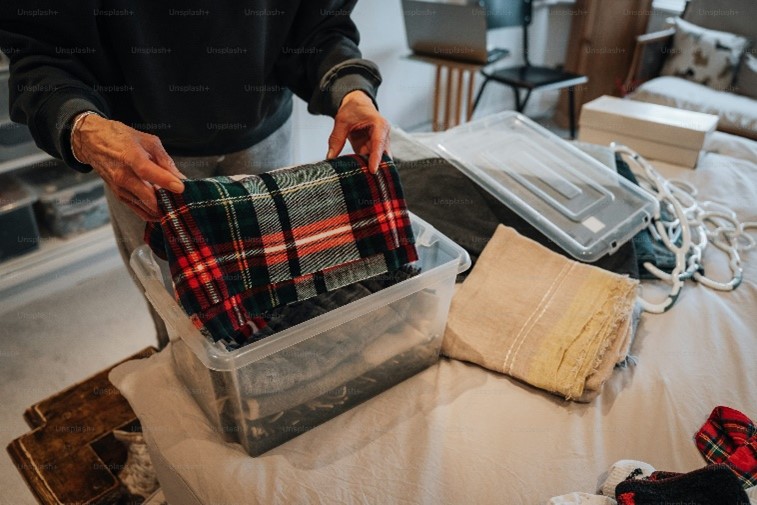Blog
Key Reasons You Might Need a Professional House Clearance Company

House clearances are one of the UK’s growth industries, with increasing number of online searches being recorded over the past 20 years. The convenience of having a team of dedicated professionals declutter your home or business, coupled with the need to ensure you comply with any legal requirements, means it’s often quicker and safer to let a professional clearance company take over.
Here Hamiltons Removals, who can carry out house clearances in Norfolk, Suffolk and across the UK, identify some of the commonest underlying reasons behind many house clearances.
A House Move
This is one of the commonest reasons why you might need a house cleared – particularly if you are moving a long way away (including overseas) and can’t take all your possessions with you. Often it is easier to get a professional clearing company in to help with the process, particularly if you are short of time and have lots of other things to organise as well.
The beauty of using Hamiltons Removals is that we offer a lot of complementary services as well so a house clearance could form part of a bigger overall package. Not only can we help you with your house move, whether it’s to the UK or overseas, but we also offer secure self-storage facilities in the heart of East Anglia – via our two Safe N Stored sites at Harleston and Aldeby, on the Norfolk/Suffolk border.
You can keep your possessions safe and secure at both of these sites if you haven’t decided what to do with them, or you are moving overseas for a fixed period of time and want to somewhere to store them until you return.
We also stock plenty of high-quality packing materials at our shop which is at our Harleston site but which you can also access online.
A House Declutter
Sometimes it’s a good idea to have your house cleared even if you are not on the move. A clutter-free home creates a sense or order, reduces stress and improves your overall well-being.
A house clearance will also allow you to declutter your living spaces and organise your belongings more effectively. This is particularly true if you want to do some painting and decorating or embark on a major home DIY project.
A Hoarding Situation
Sometimes a member of the family or a friend might be suffering from a hoarding problem – that is, a build-up of possessions which they cannot bring themselves to get rid of. The official NHS definition of a hoarder is ‘someone who has acquired an excessive number of items and stores them in a chaotic manner, usually resulting in unmanageable amounts of clutter’
These items typically can be books, newspapers and magazines, clothes, and (in this digital age) emails. There may be environmental health issues if perishable foodstuffs and hazardous materials are among the items which have been hoarded.
House clearance experts who are also Licensed Waste Carriers – such as Hamiltons Removals – will be able to dispose of the items safely and securely, while treating the matter very sensitively.
Legal Compliance (1)
Sometimes residential properties need to be ‘given back’ to the owner – the local authority if it’s council-owned, or a private landlord (usually if it’s rented). There are often terms in the lease agreement which stipulate what needs to be cleared out, and by what time.
If time is a factor – for example, if a new occupant has been lined up to move in, then you might find it easier to get use a professional house clearance company. We may be able to do a much quicker job of clearing out a house within a specified timeframe.
Legal Compliance (2)
In recent years the authorities have got a lot tougher when it comes to disposing of certain items – whether they come from rented properties or private homes – due to public health concerns.
This can apply to some so-called ‘white goods’ such as refrigerators (because of issues with CFCs) and older furniture (because of fire safety concerns). You may not be allowed to dispose of these items at your local authority waste site. Again, our Waste Carriers’ Licence comes in handy here – we will know what to do with these potentially hazardous items and where to take them.
A Family Bereavement
Sometimes house clearances form part of the process of granting probate – which will mean coming up with a valuation of the house and contents as part of a deceased person’s estate before disposing of the items.
And sometimes houses need clearing out because of a death in the family. Although these aren’t always part of a probate process, they can still be emotionally difficult to deal with these and you may benefit from the sensitive yet dispassionate approach that a professional clearing company can bring to the process.
House Clearances in Norfolk from Hamiltons Removals
If you would like to know more about any of our house clearance services, follow this link. You can fill in the online form on the page if you have any queries, or call us on 01379 855203 or email declutter@hamiltonsremovals.co.uk.
The Most Valuable Art and Antiques Sold at Auction
Art and antiques are big business – with prices at the top end of the market running into hundreds of millions of pounds. Here Hamiltons Removals, who provide artwork shipping across the UK, share the most valuable paintings, sculptures and antiques which have been sold at auction.

The Most Valuable Painting
Salvatore Mundi by Leonardo da Vinci fetched $450million (£347m) when it was sold at Christie’s in New York in 2017. The painting, pictured above, was bought by Bader bin Abdullah bin Mohammed bin Farhan Al Saud, a member of the Saudi royal family.
The picture is of Jesus Christ in Renaissance-style clothing. There have been controversies about how much da Vinci contributed to it and it is believed to have been overpainted and restored.
Another da Vinci piece, the arguably more famous Mona Lisa, was assessed as having a value of $100m (£79m) in 1962. However, the estimated value is now 10 times that sum. It’s not likely to come up for auction, though, as it is in permanent display in the Louvre.
The Most Valuable Sculpture
L’Homme au doigt (the man with the finger) by Alberto Giacometti was also sold by Christie’s in New York, but in 2015 – the $141.3m (£112m) sale price was also a record for a sculpture.
It was made in 1947 out of bronze and depicts a man with a pointed finger. The artist was a Swiss sculptor who was also a painter, draftsman and printmaker. Experts say the price was driven by the investment value as well as collectors seeking out the very best work – this piece went to a private collector.
The Most Expensive Piece of Literature
Microsoft founder Bill Gates paid the most for a book at auction, in 1994. He spent $30.8m (almost £24m) on a notebook of scientific writings by da Vinci, called Codex Leicester.
It covers topics such as the movement of water, and the luminosity of the moon. Christie’s in New York were again the auctioneers. While it tends to be older or more historic books and manuscripts which fetch the highest prices, a handwritten (and illustrated) manuscript by JK Rowling fetched $3.97m (£3.15m) in 2007. It wasn’t a Harry Potter book but The Tales of Beedle the Bard, a book of fairytales.
The Most Expensive Celebrity Collectibles
The growth in celebrity culture and endorsements mean that high prices can be paid for anything with the right provenance. So a pair of ruby slippers worn by Judy Garland in The Wizard of Oz fetched $32m (£25m) only last year.
Baseball superstar Babe Ruth’s 1932 World Series jersey fetched over $24m (£19m), again in 2024. And Paul Newman’s Rolex Daytona watch went for more than $17m (£13.5m) in 2017 – the actor wore the watch during his motor racing career.
Antique Transportation in the UK from Hamiltons Removals
While we may not have handled the items listed above, Hamiltons Removals would be happy to. We have more than three decades’ worth of experience in handling paintings, as well as other artwork and collectibles.
We can transport them by road, air, and can organise artwork shipping – all co-ordinated from our base on the Norfolk/Suffolk border. If you need to store them then we can take care of that as well – they can be watched around the clock and in temperature-controlled conditions.
We also have a range of packing materials (such as cushioned lining and over carding) which will offer your possessions high levels of protection. And lastly, we offer ‘White Glove’ services – for more information go to fineart@hamiltonsremovals.co.uk or call us on 01379 855203 and a member of our Art & Antiquities team will contact you.
Image: WIKIMEDIA COMMONS











